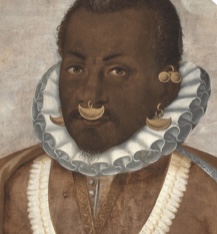Slavery, Law, & Power
Slavery, Law, & Power is a website dedicated to the digital archiving, collecting, and interpreting of primary source documents related to the institution of slavery and power dynamics in the Americas. With a focus on the pre-Colonial and Early American Republic periods, this digital history project urges its users to examine the connectivity between documents like the Barbados Slave Code from 1661, King George III’s correspondence on slavery in the 1770s, or St. George Tucker’s Gradual Emancipation Act of 1796 and come to a conclusion as to how these systems of race, religion, and/or wealth affects systems of power.
Led by Dr. Holly Brewer and published through the University of Maryland - College Park, Slavery, Law, & Power is a necessary addition to any teacher discussing slavery in the U.S or the Early Modern Period (1450s-1700s). One of the many great features in this project is its digitization and transcription of 18th-century documents, in which users can flip through the digitized version, or on the same page, read through the transcriptions themselves. Each webpage with transcriptions offers an introduction for users to get the necessary historical background on the person, place, or time period, before reading the document. Additionally, there is an interactive timeline placing European conquest and slavery into one linear structure. Users can scroll down the webpage and click on various chapters (users can also select the chapters themselves at the top of the home page) and see how certain moments in history build off of themselves and continue expanding the system of slavery in the Americas. Also, “The Royal Geographic Pastime Game (1770)” and “British Empire in Americas” are interactive digital maps that allow users to play a game created in the 18th century that directly discusses colonialism and see how far Great Britain's reach was leading up to and through the American Revolution, respectively.
Overall, this site is incredibly cohesive and can provide an interesting discussion with students about the complex and deep nature of colonialism, slavery, and economic rule. This site would also be a great companion piece to World History Common’s own “Short Teaching Module: Childhood and Transatlantic Slavery,” where Steven Mintz breaks down The Interesting Narrative of the Life of Olaudah Equiano or Gustavus Vassa the African, and explores its importance around the growing anti-slavery sentiments at the time. Both the site and Mintz’s teaching module ask users to dive into discussions of slavery unapologetically and encourage critical thinking about how it could affect systems in America today.
